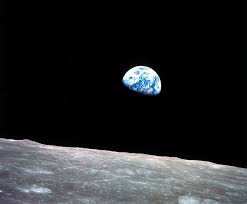We all know that the Earth has its own magnetic field. But have we heard the same for the moon? Not until now. Scientists believe that a lunar magnetic field existed a billion years ago and was twice as strong as the earth's field today. The startling revelation was made in a study by the Massachusetts Institute of Technology (MIT) in Cambridge, United States. The scientists came to the finding by studying the moon samples brought back by NASA's Apollo mission.
The Massachusetts Institute of Technology (MIT) measured microteslas in order to determine changes in the magnetic field against the Earth's magnetism which is 50 microteslas today, a press release stated. It said that the rock samples, dating back four billion years, measured around 100 microteslas. It implies that the lunar magnetic field was twice as strong as the earth.
But, how did the moon lose its magnetic field?
The scientists believe that the moon was a lot closer to the Earth four billion years ago. This is the reason how earth's gravity helped the moon maintain its magnetic field back then. The Earth's gravity worked its effect on the Moon, shaking up its iron core, producing a powerful magnetic field that we call a 'dynamo' generated by electric currents. These are the movements on Earth that cause volcanoes to erupt. The same movements caused the moon's magnetism to get stronger for a short time but it was left on its own as it started drifting away from the Earth. Without Earth’s gravity to stir up the iron inside, the lunar core started to crystallize around 2.5 billion years ago. Once it was completely hardened, there was nothing left to generate a magnetic field and the Moon became defenseless against the harsh whips of the Sun. This marked the demise of the powerful lunar dynamo.
ALSO READ | Earth's Magnetic Field racing towards Siberia at unprecedented speed, scientists baffled
ALSO READ | Mysterious 'lunar swirls' point to Moon's volcanic, magnetic past
